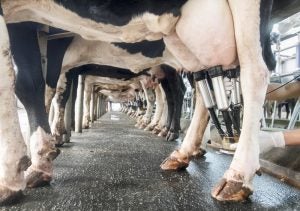At COP28, a conference where countries aimed to strengthen their commitments to reduce greenhouse gas emissions and mitigate the impacts of climate change, six of the world’s largest food companies launched the Dairy Methane Alliance.
Danone, Bel Group, General Mills, Lactalis USA, Kraft Heinz, and Nestle will begin reporting methane emissions by mid-2024. The companies will write action plans to reduce methane by the end of the year.
According to the U.N.’s Food and Agriculture Organization, livestock contributes about 30 percent of the globe’s anthropogenic methane emissions. The U.S. Environmental Protection Agency says methane is nearly 30 times more potent than carbon dioxide.
“There’s not one silver bullet. We have to look at this full spectrum of different options for farms across different geographies,” Chris Adamo, Danone’s vice president of government and public affairs, told Reuters.

There’s more to the methane story
Farmers in the U.S. area, however, are already making strides at improving methane outputs by cattle. While the U.N. lists a 30 percent worldwide contribution by livestock, other sources indicate that ruminant animals contribute 16 percent of total global emissions. Of that 16 percent, beef and dairy cattle contribute 65 percent of methane emitted, with small ruminants and buffalo contributing 15 percent.
The largest source of methane emissions is the oil, natural gas, and coal industries (19 percent).
The carbon atom released by cattle as part of methane (CH4), comes from the carbon dioxide in the plants they eat. Methane released from the rumen decays into carbon dioxide after 10 to 12 years in the atmosphere.
Although it’s a natural process, much is being done to mitigate methane emissions from cattle. Research on feed additives, such as adding nitrates to rations, covering dairy lagoons, and utilizing methane produced for power, all contribute to decreasing methane emissions from cattle.















